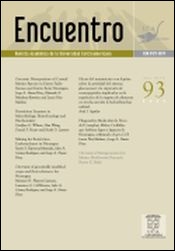Restriction Enzymes in Microbiology, Biotechnology and Biochemistry
DOI:
https://doi.org/10.5377/encuentro.v0i93.909Palabras clave:
DNA, specificity, recognition, discrimination, restriction, modification, endonuclease, methyltransferase, X-ray crystallography, major groove, minor groove, hydrogen bond, steric clash, electrostatic attraction, repulsionResumen
Since their discovery in the nineteen-seventies, a collection of simple enzymes termed Type II restriction endonucleases, made by microbes to ward off viral infections, have transformed molecular biology, spawned the multi-billion dollar Biotechnology industry, and yielded fundamental insights into the biochemistry of life, health and disease. In this article we describe how these enzymes were discovered, and we review their properties, organizations and genetics. We summarize current ideas about the mechanism underlying their remarkable ability to recognize and bind to specific base pair sequences in DNA, and we discuss why these ideas might not be correct.
We conclude by proposing an alternative explanation for sequence-recognition that resolves certain inconsistencies and provides, in our view, a more satisfactory account of the mechanism.
Descargas
4411
Descargas
Publicado
Cómo citar
Número
Sección
Licencia
Aviso de derechos de autor: Todos los artículos publicados están bajo la licencia de Creative Commons (BY, NC, SA), en los siguientes términos: no se permite un uso comercial de la obra original ni de las posibles obras derivadas, la distribución de las cuales se debe hacer con una licencia igual a la que regula la obra original. Esto no condiciona que los autores/as mantienen sus derechos sin restricciones. La revista permite a los autores/as reterner los derechos de publicación sin restricciones.

Encuentro está bajo una licencia de Creative Commons Reconocimiento-NoComercial-CompartirIgual 4.0 Internacional.

